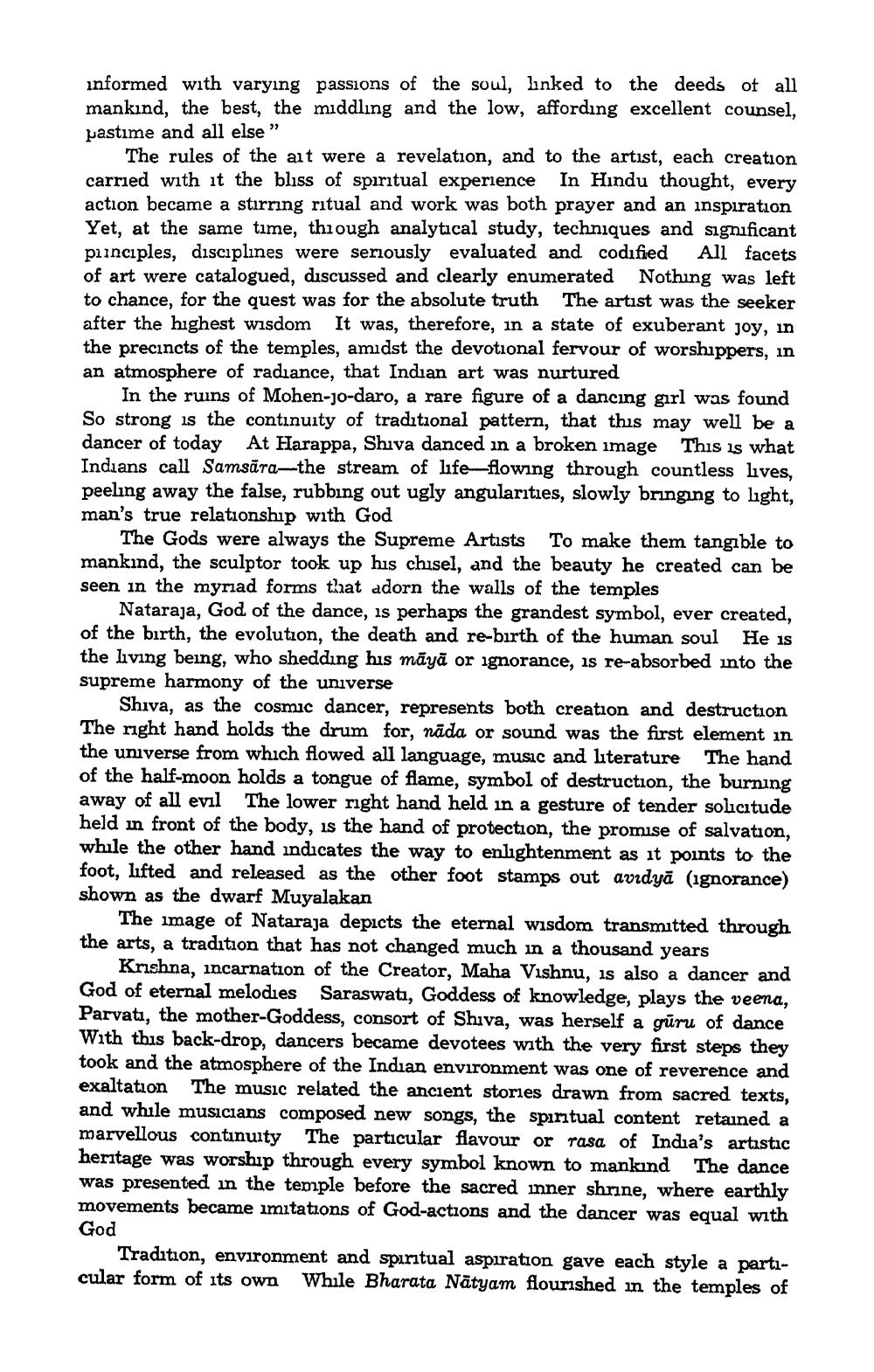Book Title: Sacred Dance of India Author(s): Mrinalini Sarabhai Publisher: Bharatiya Vidya Bhavan View full book textPage 6
________________ informed with varying passions of the soul, linked to the deeds of all mankind, the best, the middling and the low, affording excellent counsel, pastime and all else" The rules of the ait were a revelation, and to the artist, each creation carried with it the bliss of spiritual experience In Hindu thought, every action became a stirring ritual and work was both prayer and an inspiration Yet, at the same time, through analytical study, techniques and significant piinciples, disciplines were seriously evaluated and codified All facets of art were catalogued, discussed and clearly enumerated Nothing was left to chance, for the quest was for the absolute truth The artist was the seeker after the highest wisdom It was, therefore, in a state of exuberant joy, in the precincts of the temples, amidst the devotional fervour of worshippers, in an atmosphere of radiance, that Indian art was nurtured In the ruins of Mohen-jo-daro, a rare figure of a dancing girl was found So strong is the continuity of traditional pattern, that this may well be a dancer of today At Harappa, Shiva danced in a broken image This is what Indians call Samsara-the stream of life-flowing through countless lives, peeling away the false, rubbing out ugly angularities, slowly bringing to light, man's true relationship with God The Gods were always the Supreme Artists To make them tangible to mankind, the sculptor took up his chisel, and the beauty he created can be seen in the myriad forms that adorn the walls of the temples Nataraja, God of the dance, is perhaps the grandest symbol, ever created, of the birth, the evolution, the death and re-birth of the human soul He is the living being, who shedding his māyā or ignorance, is re-absorbed into the supreme harmony of the universe Shiva, as the cosmic dancer, represents both creation and destruction The right hand holds the drum for, näda or sound was the first element in the universe from which flowed all language, music and literature The hand of the half-moon holds a tongue of flame, symbol of destruction, the burning away of all evil The lower right hand held in a gesture of tender solicitude held in front of the body, is the hand of protection, the promise of salvation, while the other hand indicates the way to enlightenment as it points to the foot, lifted and released as the other foot stamps out avidya (ignorance) shown as the dwarf Muyalakan The image of Nataraja depicts the eternal wisdom transmitted through the arts, a tradition that has not changed much in a thousand years Krishna, incarnation of the Creator, Maha Vishnu, is also a dancer and God of eternal melodies Saraswati, Goddess of knowledge, plays the veena, Parvati, the mother-Goddess, consort of Shiva, was herself a guru of dance With this back-drop, dancers became devotees with the very first steps they took and the atmosphere of the Indian environment was one of reverence and exaltation The music related the ancient stories drawn from sacred texts, and while musicians composed new songs, the spiritual content retained a marvellous continuity The particular flavour or rasa of India's artistic heritage was worship through every symbol known to mankind The dance was presented in the temple before the sacred inner shrine, where earthly movements became imitations of God-actions and the dancer was equal with God Tradition, environment and spiritual aspiration gave each style a particular form of its own While Bharata Natyam flourished in the temples ofPage Navigation
1 ... 4 5 6 7 8 9 10 11 12 13 14 15 16 17 18 19 20 21 22 23 24 25 26 27 28 29 30 31 32 33 34 35 36 37 38 39 40 41 42 43 44 45 46 47 48
